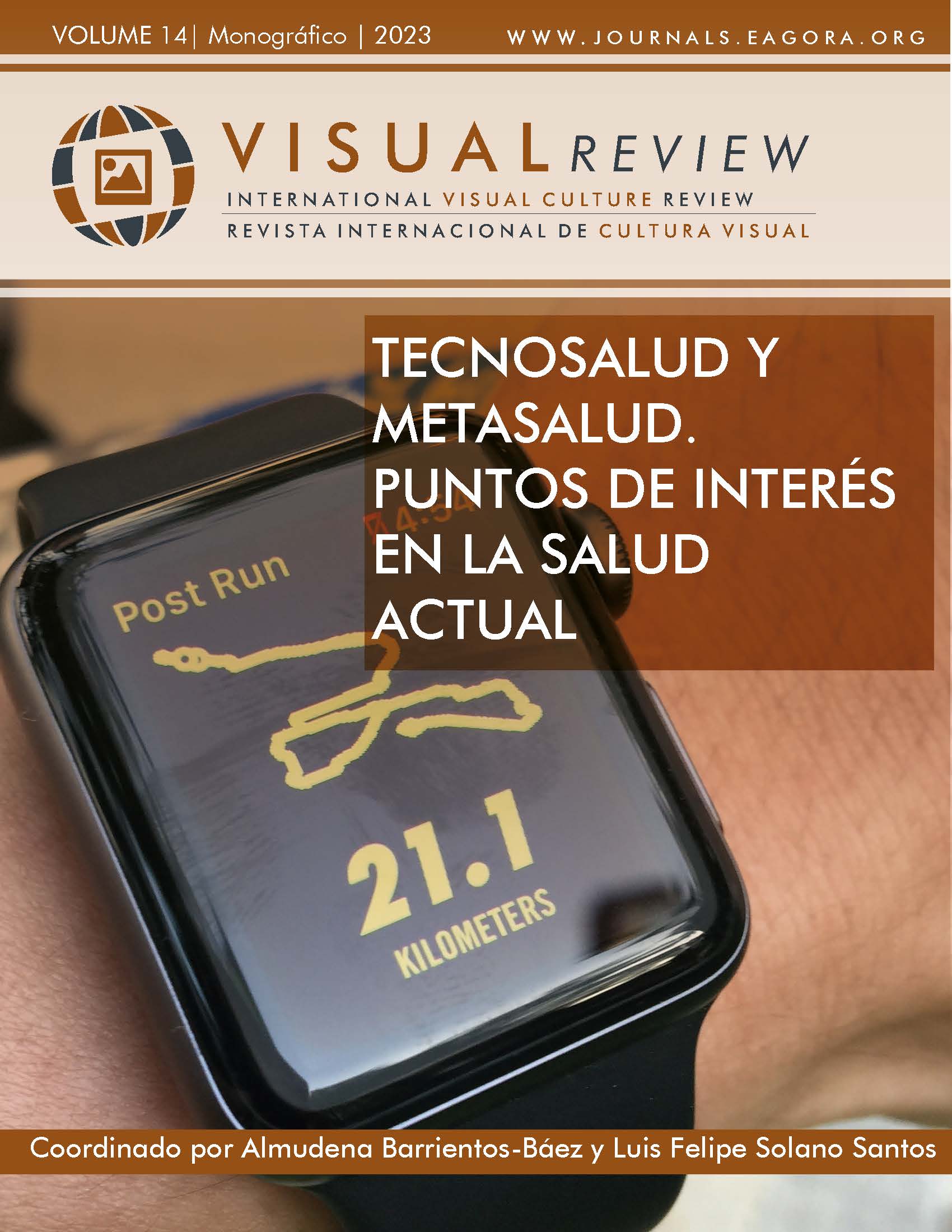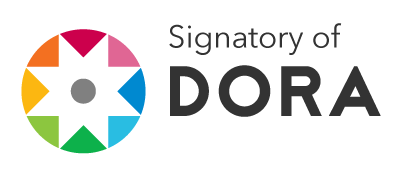Association of occupational burnout and sociodemographic data in nurses
DOI:
https://doi.org/10.37467/revvisual.v10.4617Keywords:
Psychological exhaustion, Emotional exhaustion, Psychic exhaustion, Burnout, Job burnout, Occupational exhaustion, Professional wearAbstract
Objective: to analyze the association of occupational burnout and sociodemographic data in nursing professionals from a second level of care hospital in Mexico. Method: Analytical, cross-sectional study, population of 78 nursing professionals, the 30-item Occupational Burnout Scale (EDO) was used. Descriptive and inferential statistics were obtained, such as frequencies, percentages and Pearson's Chi2. Results: An association was found between occupational burnout and academic training (p=.018), absences from work (p=.047) and gender (p=.947). Conclusions: A minimal part of the population presents occupational burnout at work.
Downloads
Global Statistics ℹ️
|
1203
Views
|
702
Downloads
|
|
1905
Total
|
|
References
Alharbi, J., Jackson, D., & Usher, K. (2020). The potential for COVID-19 to contribute to compassion fatigue in critical care nurses. Journal of clinical nursing, 29(15-16), 2762–2764. https://doi.org/10.1111/jocn.15314. DOI: https://doi.org/10.1111/jocn.15314
Arrogante, O. & Aparicio-Zaldivar, E.G. (2020). Burnout syndrome in intensive care professionals: Relationships with health status and wellbeing, Enfermería Intensiva (English ed.), 31(2), 60-70. https://doi.org/10.1016/j.enfie.2019.03.004. DOI: https://doi.org/10.1016/j.enfie.2019.03.004
Blanca-Gutiérrez J.J. y Arias-Herrera A. (2018). Síndrome de burnout en personal de enfermería: asociación con estresores del entorno hospitalario, Andalucía, España. Enferm. univ [revista en la Internet], 15(1), 30-44. https://doi.org/10.22201/eneo.23958421e.2018.1.62903 DOI: https://doi.org/10.22201/eneo.23958421e.2018.1.62903
Durán-Rodríguez, R., Gamez -Toirac, Y., Toirac-Sánchez, K., Toirac-Fuentes, J., & Toirac-Terrero, D. (2021). Síndrome de burnout en enfermería intensiva y su influencia en la seguridad del paciente. MEDISAN, 25(2), 278-291.
http://www.medisan.sld.cu/index.php/san/article/view/2854
González-Cabrera P., Santes-Bastián M.C., Lavoignet-Acosta B.J., Martínez-Díaz N. y Barrios-Melchor A. (2017). Desgaste ocupacional en profesionales de Enfermería. Actas congreso prevencionar 2017. https://dialnet.unirioja.es/servlet/articulo?codigo=6664753.
González-Cendán J., Pino-Rodríguez D., Abreu-Terry M., Sinal-Montalvo D., González-Pino D. y Rodríguez-García S. (2020). Síndrome de burnout en profesionales del Servicio de Oncología del Hospital de Ciego de Ávila. MediCiego, 26(3), e1545. http://www.revmediciego.sld.cu/index.php/mediciego/article/view/1545
Guía Informativa (2018). NOM-035-STPS-2018. Trabajo Secretaria del Trabajo y Previsión Social. Factores de riesgo psicosocial. Identificación, anaísis y prevención. https://www.gob.mx/cms/uploads/attachment/file/503381/NOM035_guia.pdf
Grisales-Romero, H., Muñoz, Y., Osorio, D., & Robles, E.. (2016). Síndrome de Burnout en el personal de enfermería de un hospital de referencia Ibagué, Colombia, 2014. Enfermería Global, 15(41), 244-257. https://doi.org/10.6018/eglobal.15.1.212851 DOI: https://doi.org/10.6018/eglobal.15.1.212851
Juárez-García, A. (2020). Síndrome de burnout en personal de salud durante la pandemia COVID-19: un semáforo naranja en la salud mental. Revista de la Universidad Industrial de Santander. Salud, 52(4), 432-439. https://doi.org/10.18273/revsal.v52n4-2020010 DOI: https://doi.org/10.18273/revsal.v52n4-2020010
Liu, X., Chen, J., Wang, D., Li, X., Wang, E., Jin, Y., et al. (2020). COVID-19 Outbreak Can Change the Job Burnout in Health Care Professionals. Front Psychiatry, 11, 563781. 10.3389/fpsyt.2020.563781. DOI: https://doi.org/10.3389/fpsyt.2020.563781
Linares-Parra, G. y Guedez-Salas, Y.S.(2021). Síndrome de burnout enfermedad invisible entre los profesionales de la salud. Aten primaria, 53, 102017, http://dx.doi.org/10.1016/j.aprim.2021.102017 DOI: https://doi.org/10.1016/j.aprim.2021.102017
Marca-Francès, G., Compte-Pujol, M., Menéndez-Signorini, J. A., & Frigola-Reig, J. (2021). La comunicación como elemento fundamental en la literatura especializada en experiencia de paciente (1989-2013). Revista de Comunicación Y Salud, 11, 103-123. https://doi.org/10.35669/rcys.2021.11.e269 DOI: https://doi.org/10.35669/rcys.2021.11.e269
Maslach, C., & Leiter, M. P. (2016). Understanding the burnout experience: recent research and its implications for psychiatry. World psychiatry : official journal of the World Psychiatric Association (WPA), 15(2), 103–111. https://doi.org/10.1002/wps.20311 DOI: https://doi.org/10.1002/wps.20311
Mendoza Olguín, G. E., Mendoza Olguín, I. A., Pérez de Celis Herrero, M. de la C. y Somodevilla García, M. J. (2022). Relevancia de los Sistemas Personales de Salud durante la pandemia de COVID-19 en México. Revista de Comunicación y Salud, 12, 61-81. https://doi.org/10.35669/rcys.2022.12.e287 DOI: https://doi.org/10.35669/rcys.2022.12.e287
Montes-Berges, B. & Fernández-García, E. (2022). El efecto de la pandemia en la salud y Síndrome de Burnout en profesionales de enfermería de UCI. Enfermería Global, 21(66), 1-27. Epub 02 de mayo de 2022.https://dx.doi.org/10.6018/eglobal.483261 DOI: https://doi.org/10.6018/eglobal.483261
Organización Mundial de la Salud (julio, 2022). Medicos y pacientes.com. 72ª asamblea Ginebra.
shorturl.at/JSTZ5.
Quiroz-Ascencio G, Vergara-Orozco M.G. & Yáñez-Campos M. del R., et al.(2021). Prevalencia de síndrome de Burnout en profesionales de la salud ante pandemia de COVID-19. Sal Jal. 8(Esp):20-32. https://www.medigraphic.com/pdfs/saljalisco/sj-2021/sje211h.pdf
Quijada-Martínez, P.J., Cedeño-Idrogo, I.R. & Terán-Ángel, G. (2021). Quality of Professional Life and Burnout of the Nursing Staff at an Intensive Care Unit in Venezuela. Investigación y Educación en Enfermería, 39(2), e08. https://doi.org/10.17533/udea.iee.v39n2e08 DOI: https://doi.org/10.17533/udea.iee.v39n2e08
Reglamento de la Ley General de Salud en materia de investigación para salud (2014). Cámara de diputados del H. Congreso de la Unión. Secretaria General. Secretaria de Servicios Parlamentarios. 2-04-2014. http://www.diputados.gob.mx/LeyesBiblio/regley/Reg_LGS_MIS.pdf
Rendón-Montoya, M. S., Peralta-Peña, S.L., Hernández-Villa, E. A., Hernández, R.I., Vargas, M.R., & Favela-Ocaño, M.A. (2020). Síndrome de burnout en el personal de enfermería de unidades de cuidado crítico y de hospitalización. Enfermería Global, 19(59), 479-506. Epub 10 de agosto de 2020.https://dx.doi.org/10.6018/eglobal.398221 DOI: https://doi.org/10.6018/eglobal.398221
Rivas E. y Barraza-Macías A. (2018). Síndrome de Burnout en el personal de enfermería y su relación con cuatro variables laborales. Enferm. univ [revista en la Internet], 15(2), 136-146. https://doi.org/10.22201/eneo.23958421e.2018.2.65171. DOI: https://doi.org/10.22201/eneo.23958421e.2018.2.65171
Salviato Lais S. & Vasconcelos, Filho, P.O. (2021). Síndrome de Burnout en profesionales de la salud en un escenario pandémico Covid-19: análisis de un hospital universitario. Revista Científica Multidisciplinar Núcleo do Conhecimento, 08(06), 27-44. Agosto 2021. shorturl.at/jLPU1 DOI: https://doi.org/10.32749/nucleodoconhecimento.com.br/psicologia/hospital-universitario
Silva-Gomes, R.N. y Silva-Gomes, V.T. (2021). Pandemia de la COVID-19: síndrome de Burnout en profesionales sanitarios que trabajan en hospitales de campaña en Brasil. Enfermería Clínica, 31(2), 128-129, https://doi.org/10.1016/j.enfcli.2020.10.011. DOI: https://doi.org/10.1016/j.enfcli.2020.10.011
Sultana, A., Sharma, R., Hossain, M. M., Bhattacharya, S., & Purohit, N. (2020). Burnout among healthcare providers during COVID-19: Challenges and evidence-based interventions. Indian journal of medical ethics, V(4), 1–6. https://doi.org/10.20529/IJME.2020.73. DOI: https://doi.org/10.31235/osf.io/4hxga
Shah MK, Gandrakota N, Cimiotti JP, Ghose N, Moore M & Ali MK. (2021). Prevalence of and Factors Associated With Nurse Burnout in the US. JAMA Netw Open, 4(2), 1-11 10.1001/jamanetworkopen.2020.36469. DOI: https://doi.org/10.1001/jamanetworkopen.2020.36469
The Lancet (2020, 21 de marzo). COVID-19: protecting health-care workers. The Lancet, 395, 922. https://doi.org/10.1016/S0140-6736(20)30644-9 DOI: https://doi.org/10.1016/S0140-6736(20)30644-9
Torres-Toala, F.G., Irigoyen-Piñeiros, V., Moreno, A.P., Ruilova-Coronel, E.A., Casares-Tamayo, J., & Mendoza-Mallea, M. (2021). Síndrome de Burnout en profesionales de la salud del Ecuador y factores asociados en tiempos de pandemia.. Revista Virtual de la Sociedad Paraguaya de Medicina Interna, 8(1), 126-136. https://dx.doi.org/10.18004/rvspmi/2312-3893/2021.08.01.126 DOI: https://doi.org/10.18004/rvspmi/2312-3893/2021.08.01.126
Uribe Prado, J.F., López Flores, P.R., Pérez Galicia, C. & García Saisó, A. (2014). Síndrome de Desgaste Ocupacional (Burnout) y su Relación con Salud y Riesgo Psicosocial en Funcionarios Públicos que Imparten Justicia en México, D.F.. Acta de investigación psicológica, 4(2),1510-1519. https://doi.org/10.1016/S2007-4719(14)70393-X DOI: https://doi.org/10.1016/S2007-4719(14)70393-X
Uribe-Prado, J.F. (2010). Escala de Desgaste Ocupacional (EDO). Editorial Manual Moderno. https://distribuidorapsique.com/escala-de-desgaste-ocupacional-burnout-edo
Vásquez-Trespalacios, E.M., Aranda-Beltrán, C., & López-Palomar, M.R.. (2020). Síndrome de Burnout y justicia organizacional en profesionales de enfermería de hospitales de tercer nivel en la ciudad de Medellín. Revista de la Asociación Española de Especialistas en Medicina del Trabajo, 29(4), 330-339.
https://scielo.isciii.es/pdf/medtra/v29n4/1132-6255-medtra-29-04-330.pdf
Zerbini, G., Ebigbo, A., Reicherts, P., Kunz, M., & Messman, H. (2020). Psychosocial burden of healthcare professionals in times of COVID-19 - a survey conducted at the University Hospital Augsburg. German medical science: GMS e-journal, 18, Doc05. https://doi.org/10.3205/000281.
Zhang, Y., Wang, C., Pan, W., Zheng, J., Gao, J., Huang, X., Cai, S., Zhai, Y., Latour, J. M., & Zhu, C. (2020). Stress, Burnout, and Coping Strategies of Frontline Nurses During the COVID-19 Epidemic in Wuhan and Shanghai, China. Frontiers in psychiatry, 11, 565520. https://doi.org/10.3389/fpsyt.2020.565520 DOI: https://doi.org/10.3389/fpsyt.2020.565520
Downloads
Published
How to Cite
Issue
Section
License
Those authors who publish in this journal accept the following terms:
-
Authors retain copyright.
-
Authors transfer to the journal the right of first publication. The journal also owns the publishing rights.
-
All published contents are governed by an Attribution-NoDerivatives 4.0 International License.
Access the informative version and legal text of the license. By virtue of this, third parties are allowed to use what is published as long as they mention the authorship of the work and the first publication in this journal. If you transform the material, you may not distribute the modified work. -
Authors may make other independent and additional contractual arrangements for non-exclusive distribution of the version of the article published in this journal (e.g., inclusion in an institutional repository or publication in a book) as long as they clearly indicate that the work was first published in this journal.
- Authors are allowed and recommended to publish their work on the Internet (for example on institutional and personal websites), following the publication of, and referencing the journal, as this could lead to constructive exchanges and a more extensive and quick circulation of published works (see The Effect of Open Access).













